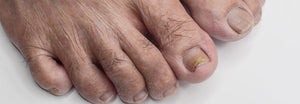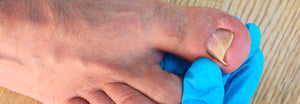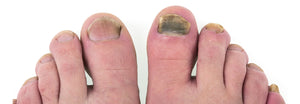Ingrown toenails occur when the corners or sides of the toenails grow inward and penetrate the surrounding skin. It's important to have a good understanding of the causes, factors that increase the risk, and proper treatment methods if you have never experienced an ingrown toenail before or if you think you might be prone to getting one.
It’s possible to remove an ingrown toenail using high-quality toenail clippers. But if the condition worsens, a surgical procedure could be the most appropriate and effective course of action.
Risk factors
Ingrown toenails are often caused by improper or incorrect nail-cutting techniques, especially in the case of the big toe. However, certain individuals are more prone to this condition, including those with excessively sweaty feet. Older adults are also at a higher risk due to the natural thickening of their toenails with age.
Certain nail characteristics, such as being curved, irregular also increases the likelihood of developing ingrown toenails. Other factors, such as sustaining an injury or wearing footwear that exerts excessive pressure on the big toe, can contribute to this condition, too.
There are several other factors that can make a person more susceptible to ingrown toenails. These include improper foot hygiene practices, genetic predisposition, and wearing shoes that are too narrow or flat, which can increase the chances of nail growth abnormalities. Furthermore, individuals who engage in high-impact activities or sports that heavily involve the feet, such as soccer, football, ballet, or kickboxing, may have an elevated risk of developing ingrown toenails compared to others.
Treatments
Although you might prefer to treat an ingrown toenail at home, it’s best to see a medical professional for a quick and effective solution. Otherwise, you risk increasing your susceptibility to an infection. Consider seeing a specialist like a podiatrist if you have a medical condition like poor circulation or diabetes.
When toenail clippers are not enough for removal, a doctor may recommend a surgical procedure like wedge resectioning, toenail removal, matrixectomy (removal of the nail and nail bed), and surgery on the toe’s tip to reshape or remove the soft tissue. If there’s an infection, a doctor may cut into the nail bed to drain the pus or relieve swelling.
That said, surgery is often the last option for treatment as it carries its own potential risks.
Prevent ingrown toenails
Having high-quality toenail clippers and proper foot care are essential in preventing ingrown toenails. If you need quality foot care tools, check out the selection here at Blizzard! We carry premium quality professional chiropodist and podiatry tools with a lifetime warranty. Furthermore, our products are made to the highest standards, including CE, UKCA and ISO 13485.Recent posts

Why Are My Toenails Thick?
Thick toenails are typically painless, but if you leave them to grow too long, they can be uncomfortable. Sometimes, they could be a sign of a fung... Read more
Understanding Ingrown Toenails: Are You Susceptible and How Effective is Surgery as a Solution?
Ingrown toenails occur when the corners or sides of the toenails grow inward and penetrate the surrounding skin. It's important to have a good unde... Read more
Preliminary Signs of a Foot Infection and What to Do About It
A crack, blister, or cut in the skin of the foot might seem like nothing until the wound gets exposed to bacteria and results in an infection. If n... Read more
5 Dos and 5 Don'ts When It Comes to Ingrown Toenails
When a toenail starts to grow into the skin around it, most people look for quick relief. But before you reach for an ingrown toenail clipper, it's... Read more





